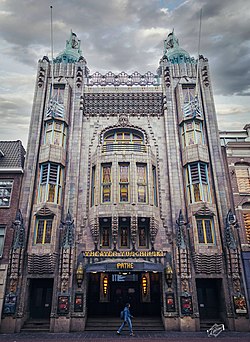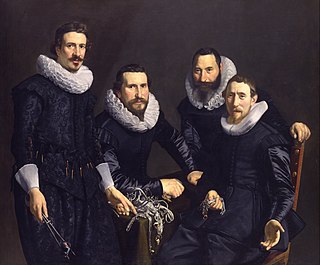
Thomas de Keyser was a Dutch portrait painter and a dealer in Belgium bluestone and stone mason. He was the most in-demand portrait painter in the Netherlands until the 1630s, when Rembrandt eclipsed him in popularity. Rembrandt was influenced by his work, and many of de Keyser's paintings were later falsely attributed to Rembrandt.

There are 137 movie theaters and 31 arthouse cinemas in the Netherlands, with a total of ca. 675 screens, in addition to 79 small arthouse cinemas and a number of adult movie theaters. The main movie theater chains in the Netherlands are Pathé, VUE and Kinepolis.

Rotterdam Ahoy is a multi-purpose complex with a convention centre and an indoor arena located in Rotterdam, Netherlands. Opened originally in 1950, the current complex consists of three main venues: a fairs and events hall, a congress and conference centre, and the main venue the Ahoy Arena. The latter opened on 15 January 1971 and is the largest multi-purpose venue in the Netherlands, with a capacity of 16,426 as of May 2019.

Amsterdam Impressionism was an art movement in late 19th-century Holland. It is associated especially with George Hendrik Breitner and is also known as the School of Allebé.
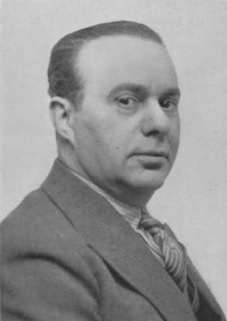
Abraham Icek Tuschinski was a Dutch businessman of Jewish Polish descent who ordered the construction of the Tuschinski Theater, a famed cinema in Amsterdam.

Amsterdam, capital of the Netherlands, has more than 100 kilometers (62 mi) of grachten (canals), about 90 islands and 1,500 bridges. The three main canals, dug in the 17th century during the Dutch Golden Age, form concentric belts around the city, known as the Grachtengordel. Alongside the main canals are 1550 monumental buildings. The 17th-century canal ring area, including the Prinsengracht, Keizersgracht, Herengracht and Jordaan, were listed as UNESCO World Heritage Site in 2010, contributing to Amsterdam's fame as the "Venice of the North".

Willy Mullens was a Dutch producer, director, and promoter of movies. He is considered to be one of the early pioneers of Dutch cinema, and one of his movies was recently elected as one of only sixteen "Canonical Dutch movies." With his brother Bernardus Albertus (Albert) he started around the turn of the 20th century one of the earliest Dutch film production companies, Alberts Frères. By the second decade of that century he was making documentary films that premiered for royalty. His second company, Haghefilm, dominated the Dutch film market between the two World Wars.
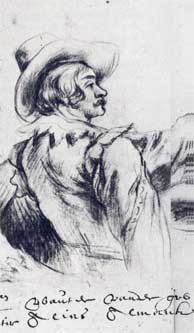
Wouter Pietersz. Crabeth II was a Dutch Golden Age painter.

Gestoorde hengelaar was the first Dutch fictional film, made by M.H. Laddé in 1896 and was produced by the studio Eerst Nederlandsch Atelier tot het vervaardigen van Films voor de Bioscoop en Cinematograaf van M.H. Laddé en J.W. Merkelbach.
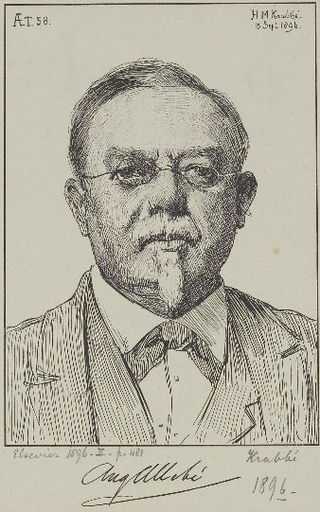
August Allebé was an artist and teacher from the Northern Netherlands. His early paintings were in a romantic style, but in his later work he was an exponent of realism and impressionism. He was a major initiator and promoter of Amsterdam Impressionism, the artist's association St. Lucas, and the movement of the Amsterdamse Joffers. Amsterdam Impressionism – sometimes referred to by art historians as the School of Allebé – was the counterflow to the very strong Hague School in the movement of Dutch Impressionism. As a professor at the Royal Academy of Amsterdam he fostered a cosmopolitan attitude toward art and the promotion and motivation of his students, and provided a significant stimulus to developments in modern art.
Pathé Cinémas is a cinema chain owned by Pathé, with operations in France, the Netherlands, Switzerland, Belgium, Morocco, and Tunisia. The company is market leader in each country it operates except Belgium, Morocco and Tunisia. Pathé is Europe's second largest cinema chain.
The following is a timeline of the history of the municipality of Amsterdam, Netherlands.

"Aan de Amsterdamse grachten" is a Dutch song by Pieter Goemans. It was written in 1949 but not recorded until 1956, and many times more since then. It is one of the standard songs celebrating the city of Amsterdam, and one of the best-known and most popular songs in the Netherlands.

Jordanus (Daan) Roodenburgh was a Dutch urban-architect and former General director of AFC Ajax.

Sensei Redenshon is a 2013 action drama-martial arts film produced by Alejandra Sanchez Gruber and directed by independent Curaçaoan filmmaker German Gruber, Jr.
The following is a timeline of the history of the municipality of Haarlem, Netherlands.
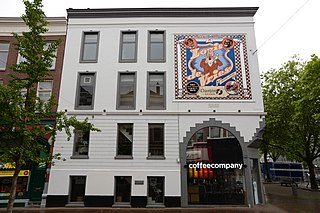
Levie "Louis" de Vries was a Dutch jazz trumpeter.

The Exhibition of Living Masters was the name given to a series of exhibitions of contemporary art, held in various cities in the Netherlands, from 1808 to 1917.
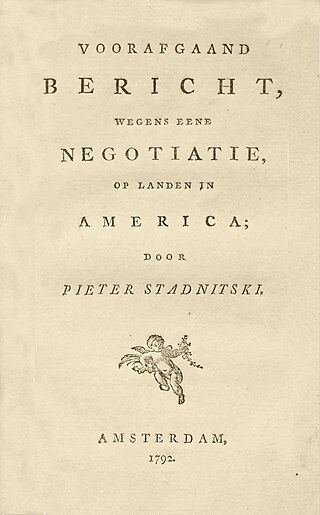
Pieter Stadnitski was a Dutch broker and financier who invested in the United States, including federal and state debt, canal companies, and land speculation, especially the Holland Land Company. He was the first to bring speculative American bonds - issued by the Congress to finance the American War of Independence - to the Amsterdam market in 1787. Stadnitski was co-founder in 1789 and from 1793 head of a small group of Amsterdam trading houses that bought land in the states of New York and Pennsylvania on a large scale. His role was considered significant by Thomas Jefferson.
The following is an alphabetical list of articles related to Amsterdam. Amsterdam is the capital city of the Netherlands.
